Injection molding is favored for its efficiency, precision, versatility, and ability to produce complex parts rapidly.
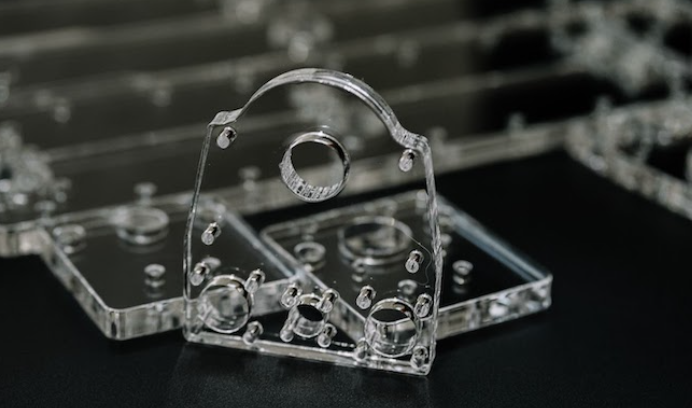
The Injection Molding Process
Injection molding is a manufacturing process for producing parts by injecting molten material into a mold. It allows for high-volume production of plastic parts with complex shapes and excellent surface finish. Here’s a detailed look at the process.
Step-by-Step Guide to Injection Molding
1. Designing the Mold: This initial phase involves creating a 3D design of the final product. Engineers and designers must consider the part’s geometry, the type of plastic material, and the properties of the final product.
2. Creating the Mold: A mold maker crafts the mold from metal, usually steel or aluminum, based on the initial design.
3. Material Selection: Choosing the right plastic material is crucial. Options vary from polystyrene to nylon, each with unique properties that affect the strength, flexibility, and thermal stability of the final product.
4. Melting the Plastic: The selected plastic material, in the form of pellets, is fed into the injection molding machine where it is heated until it melts.
5. Injection: The molten plastic is then injected into the mold cavity at high pressure using a screw or ram injector. The pressure ensures that the material reaches all parts of the mold.
6. Cooling and Solidification: Once the mold is filled, the plastic is allowed to cool and solidify into the shape of the part. Cooling times can vary depending on the thermodynamic properties of the plastic used.
7. Ejection: After the part cools and solidifies, the mold opens, and an ejection mechanism pushes the finished part out of the mold.
8. Post-Processing: The part may undergo additional processing such as drilling, painting, or surface treatment. These steps are necessary to achieve the desired final appearance and properties.
9. Quality Control: Each part is inspected for quality assurance.
Equipment and Machinery Used
Injection Molding Machine: This is the core of the injection molding process, consisting of a material hopper, an injection ram or screw-type plunger, and a heating unit.
Mold: Made of steel or aluminum, molds can be quite complex, featuring movable sections and fine details to create the desired part geometry.
Material Dryer: Many plastic materials must be dried before molding to prevent defects caused by moisture.
Granulator: Excess plastic from the process, such as runners and gates, is often recycled on-site using a granulator, which grinds the plastic into reusable pellets.
Robotics and Automation: Advanced injection molding setups often include robotic systems for parts handling and post-processing operations to enhance efficiency and precision.
Materials for Injection Molding
Each material offers a different balance of strength, flexibility, thermal characteristics, and chemical resistance.
Types of Plastics Used in Injection Molding
Thermoplastics: These are plastics that become moldable upon heating and solidify upon cooling. Commonly used thermoplastics in injection molding include:
- Polyethylene (PE): Known for its toughness and resistance to chemicals, it comes in various densities, with High-Density Polyethylene (HDPE) having a melting point of around 120 to 180°C and offering a tensile strength of 0.20-0.40 N/mm².
- Polypropylene (PP): This material is similar to PE but offers higher temperature resistance, typically withstanding temperatures up to 160°C.
- Polystyrene (PS): Often used for disposable consumer products, it’s a cost-effective material with a tensile strength of 35-50 N/mm².
- Acrylonitrile Butadiene Styrene (ABS): Known for its toughness and impact resistance, ABS has a melting point of approximately 200°C and tensile strength of 27-48 N/mm².
- Polycarbonate (PC): Offering high impact strength and heat resistance, PC has a tensile strength of up to 70 N/mm² and can handle temperatures up to 155°C.
Thermosetting Plastics: Once cured, these plastics cannot be melted. They are less common in injection molding but include:
- Epoxy: Known for its high strength and adhesive qualities, epoxy plastics have tensile strength values ranging from 30 to 90 N/mm².
- Phenolic: Often used in electrical and high-heat applications, phenolic can withstand temperatures up to 300°C for short periods.
Properties of Injection Molding Materials
The choice of material impacts the quality, functionality, and lifecycle of the injection molded part. Important properties include:
- Strength: This is a critical parameter that determines how much load a part can handle. For example, PC offers high strength with tensile strength values of up to 70 N/mm², making it suitable for safety helmets and bulletproof glass.
- Flexibility: Material like LDPE is chosen for its flexibility, as it has an elongation at break of up to 600%.
- Thermal Stability: Thermoplastics like PP remain stable at temperatures up to 160°C, making them ideal for automotive components that experience high temperatures.
- Cost-Effectiveness: PS is a low-cost option with a price range typically between $1.00 to $1.50 per pound, which is suitable for producing cost-effective consumer goods.
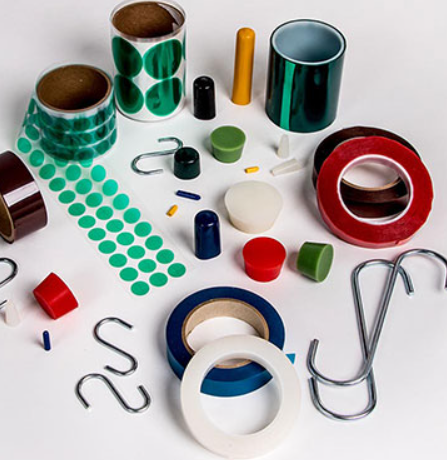
Advantages of Injection Molding
Injection molding is a highly efficient production method for manufacturing plastic parts in large volumes. The process brings several advantages, including the ability to produce complex shapes with great precision, high repeatability, and the flexibility to use a wide range of materials.
Efficiency and Productivity
Injection molding machines can produce parts at a high speed, with typical cycle times ranging from 15 to 30 seconds. A single machine can often produce parts with minimal human intervention, significantly reducing labor costs, which can account for a substantial portion of the overall manufacturing expenses.
Consistency and Reproducibility
One of the most significant benefits of injection molding is its ability to produce parts with consistent quality. The precision of the molds and the control over the injection process allow for a very low variance between individual parts, making it ideal for applications that require tight tolerances. This consistency is crucial in industries such as automotive and aerospace, where parts must meet strict specifications.
Flexibility in Design and Complexity
The flexibility of the injection molding process allows for the creation of complex geometries that would be difficult or impossible to achieve with other manufacturing processes. Designers can incorporate features like undercuts, threads, and intricate curves. The advanced mold design software allows for precise mold designs, which directly translates to the sophistication of the final product.
Material and Color Versatility
Materials can range from standard commodities like polyethylene to engineering plastics like PEEK, offering high strength and temperature resistance. Furthermore, manufacturers can achieve any desired color by adding pigments to the plastic pellets before the molding process, allowing for high customization at a minimal cost.
For instance, the cost per part can drop significantly when producing thousands of parts, with prices for simple parts dipping below $0.10 in some cases. This economy of scale is a major advantage for mass production scenarios.
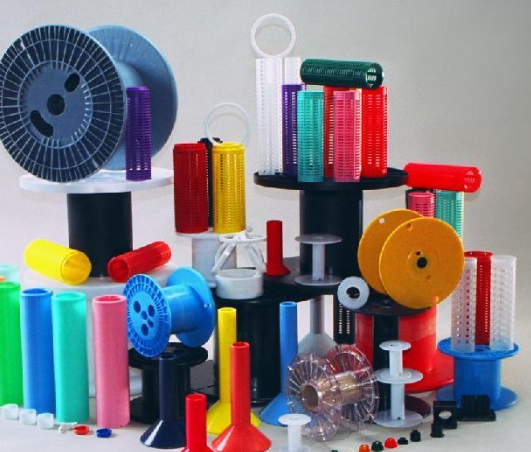
Quality and Precision in Injection Molding
The success of the injection molding process hinges on the quality and precision of the parts produced. High precision in injection molded parts is paramount, especially for critical applications in the medical, aerospace, and automotive industries.
Precision Engineering of Injection Molded Parts
To achieve the precision required for many high-performance parts, engineers employ advanced CAD (Computer-Aided Design) and CAM (Computer-Aided Manufacturing) software to design molds with tolerances as tight as ±0.01mm. State-of-the-art CNC (Computer Numerical Control) machines then mill the molds to these exact specifications.
The materials used also play a crucial role in precision. For example, using materials with a high degree of dimensional stability like PEEK (Polyether Ether Ketone) can maintain the part’s shape under extreme conditions, which is essential when designing parts that need to fit together perfectly or maintain their form under stress. PEEK parts can maintain their dimensional stability at temperatures up to 250°C.
Quality Control in the Injection Molding Process
Quality control is a systematic process that ensures every part meets the established standards. In the injection molding process, quality control starts with verifying the material quality. Technicians check for the right melt flow index, which should be consistent to ensure that the material fills the mold properly every time. A melt flow index out of the range of 10 to 30 g/10 min, for example, could indicate potential problems with the material that could affect the final part’s properties.
During production, in-process monitoring systems measure parameters like temperature, pressure, and cycle time in real-time. These parameters can be very specific; for instance, the ideal injection pressure might be within the range of 1000 to 1500 bar for a particular part, depending on its complexity and the material used.
After production, parts undergo rigorous testing. Other tests may include functional testing to ensure the part operates as intended under conditions that simulate real-world use.
Quality control also includes periodic audits of the production process. Technicians may conduct a time study to ensure that the cycle time remains consistent, often aiming for a cycle time within the range of 10 to 120 seconds, depending on the part size and complexity.
SPC can identify trends that may lead to defects, allowing for preventative action before the parts are out of specification.
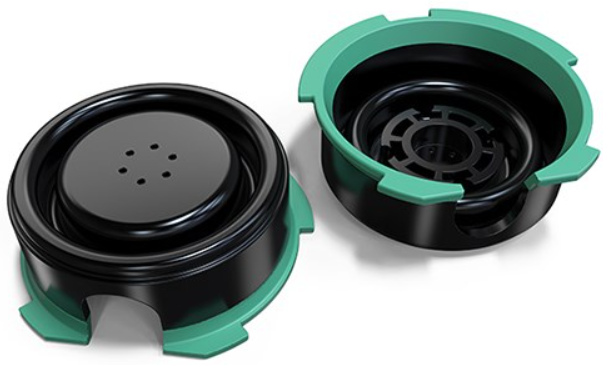
Cost Considerations in Injection Molding
When considering injection molding as a production method, it’s essential to understand the various cost factors involved. These can range from the initial investment required to set up for production to the ongoing costs of materials and operation.
Initial Investment and Mold Costs
- Mold Design and Creation: The cost of mold design and creation can be significant, often ranging from $1,000 to over $100,000.
- Machinery: Injection molding machines can vary widely in cost, from a few thousand dollars for a small hand-operated press to several hundred thousand dollars for large, high-volume machines.
Economies of Scale in Production
- Unit Cost Reduction: The more parts produced, the lower the cost per unit due to the spread of the mold and machinery costs over a larger number of parts.
- Material Costs: Bulk purchasing of raw materials can reduce costs significantly. For example, the cost of raw plastic might range from $1 to $5 per pound depending on the type and volume of the purchase.
- Energy Consumption: The energy required for injection molding can be a significant cost, especially for high-volume production. Energy costs can be reduced by optimizing cycle times and machine efficiency.
Comparison with Other Plastic Forming Techniques
- Rotational Molding: Generally less expensive in terms of molds but slower in production, making it more costly for large volumes.
- Blow Molding: Can be less expensive for hollow parts but does not provide the same level of detail and material selection as injection molding.
- Thermoforming: Lower initial costs for molds but higher material costs and less precision compared to injection molding.
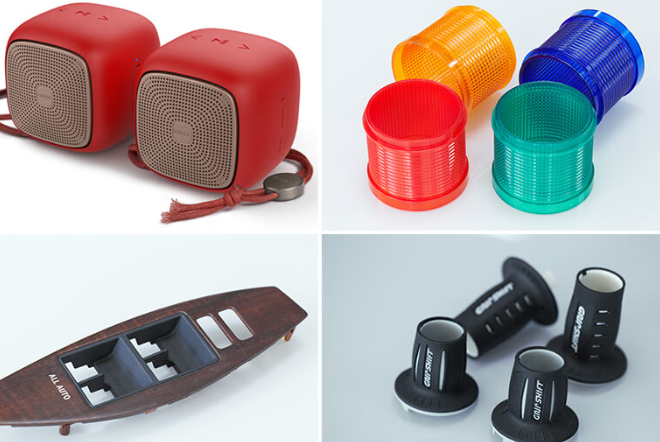
Applications of Injection Molded Plastics
These applications benefit from the ability of injection molding to produce complex shapes with great precision.
Consumer Goods and Electronics
- Packaging Solutions: It is used to create a variety of packaging products, from bottle caps to containers, due to its ability to produce lightweight and sturdy designs.
- Electronic Housings: It provides enclosures for smartphones, computers, and other consumer electronics, offering precise dimensions and openings for ports that are crucial for the fit and function of these devices.
Automotive Industry Applications
- Interior Components: Car manufacturers use injection molded plastics for dashboard components, knobs, and other interior features that require durability and a quality finish.
- Under-the-Hood Parts: Plastic engine compartment parts like sensor housings and fluid reservoirs benefit from heat-resistant plastics.
Medical Devices and Healthcare Products
- Disposable Instruments: Injection molding is ideal for producing high volumes of sterile, single-use items like syringes and surgical tools, which require precision and reliability.




